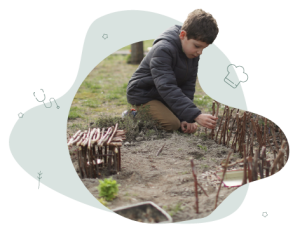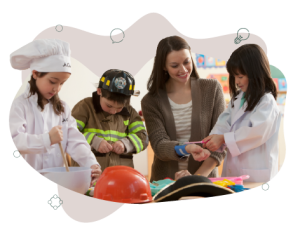13 Social and emotional capabilities
Social and emotional learning is fundamental in a child’s journey to positive outcomes in both school and life in general (Weissberg et al., 2015). Having recurrent opportunities to learn and practice social skills in play-based learning supports the development of these essential capabilities in several ways.
Play-based learning provides a way for students to practice, re-enact, and master a range of emotional ideas, feelings, and experiences. For example, when students take on the role of someone else in pretend play, they explore a range of emotions that support their capacities for empathy, abstract levels of thought and reflection. This prepares them emotionally and intellectually for the future (Wieder, 2017).
Students also develop metacognitive and self-regulatory skills that are important for higher-order thinking, creativity, planning and evaluating learning, and problem-solving (Whitebread, Coltman, Jameson & Lander, 2009). This means that social and emotional learning fosters skill-building in responsible decision-making (Weissberg et al., 2015).
In all types of play experiences, students are involved in collaboration with peers which facilitates friendships, promotes pro-social behaviours and attitudes, and fosters the experience of responding to peer suggestions and resolving conflict (Scott & Panksepp, 2003). The opportunity to build social awareness, relationship skills, and self-management is also linked to wellbeing and academic success, with lowered levels of emotional distress and conduct issues (Duncan et al., 2017; Durlak et al., 2011).

The teacher’s role in supporting capability building
Social and emotional learning is an integral part of education across all ages and stages. To support students’ exploration and application of social and emotional capabilities in play-based learning experiences, teachers can:
- provide an environment that promotes student collaboration,
- guide students to initiate interactions and solve conflicts through open-ended questions, modelling, and direct interactions,
- provide students with sufficient time to engage in play-based learning.
When designing for opportunities that build social and emotional capabilities, the ideal is a planned, ongoing and systematic approach across different years of learning (Jones & Kahn, 2017). However, students benefit in myriad ways from any play-based opportunity to build social and emotional capabilities.


